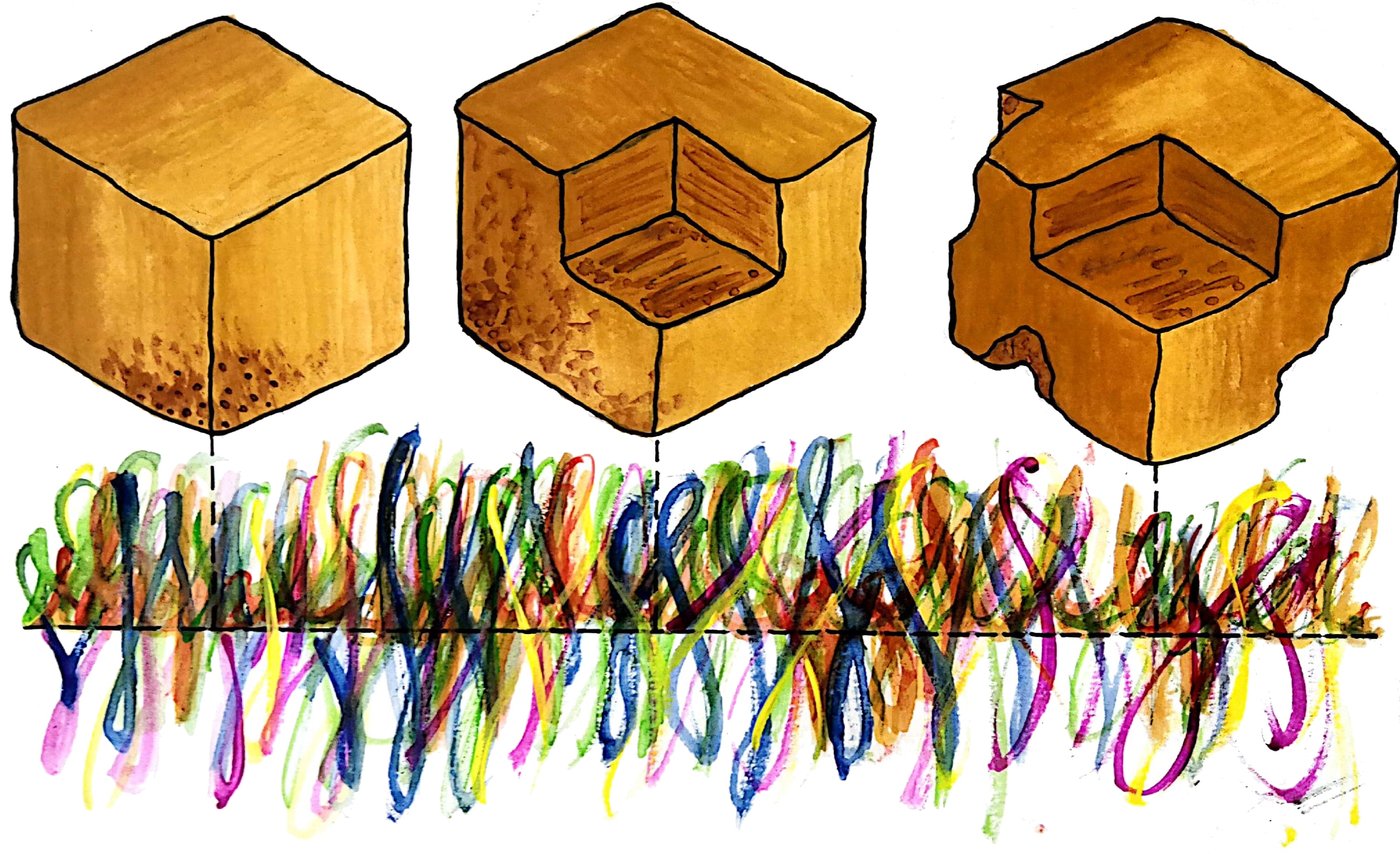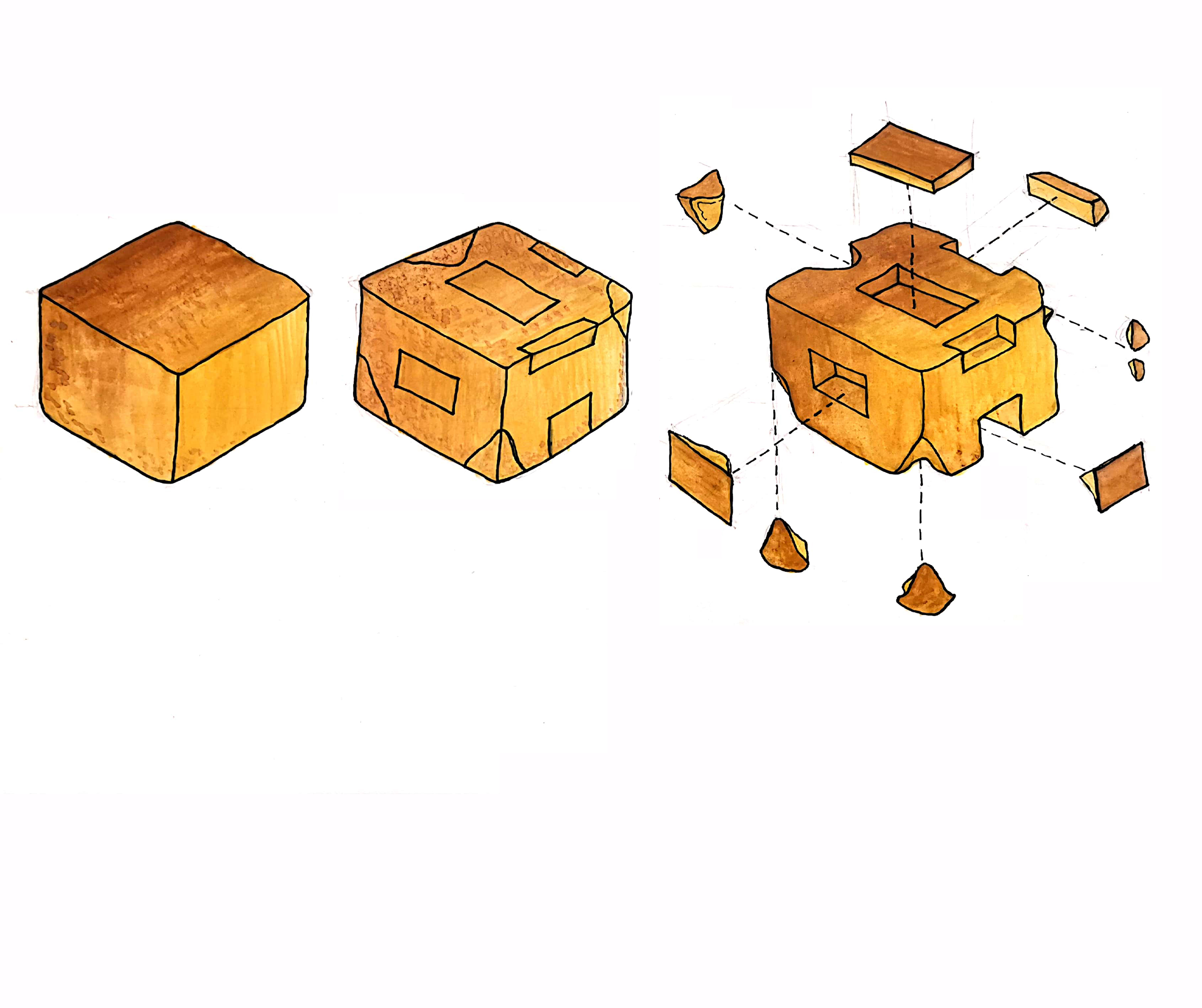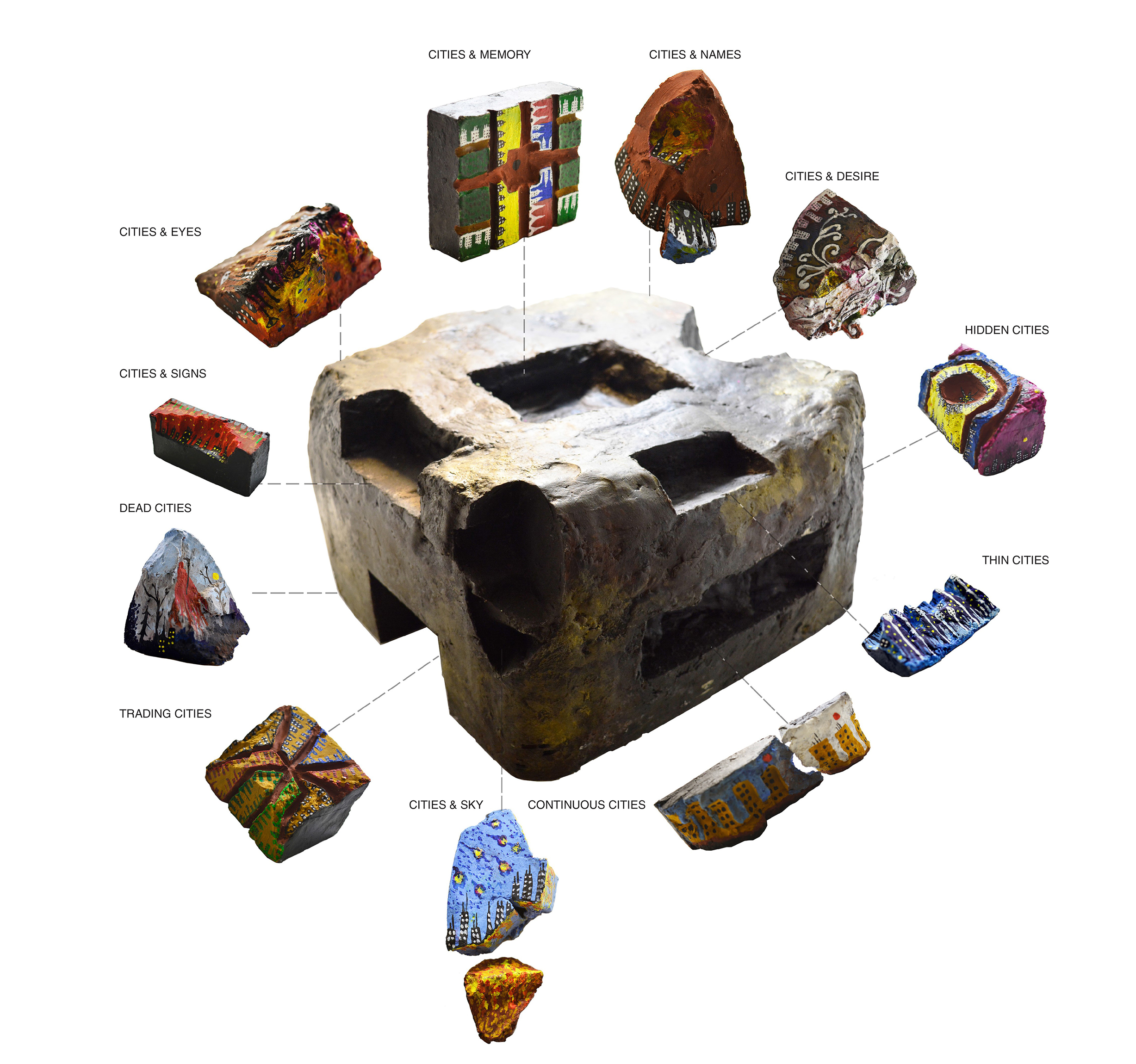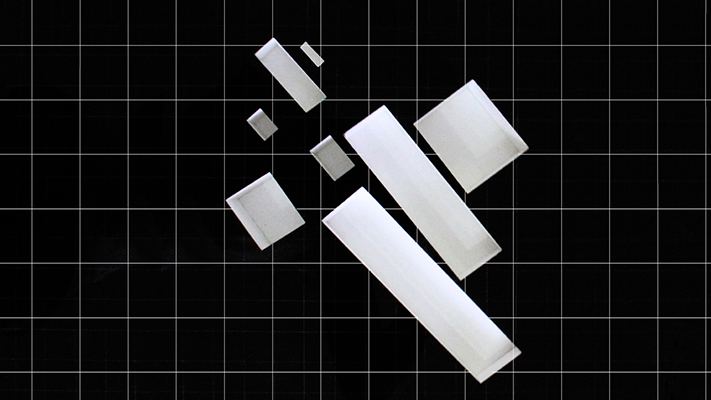The Invisible Cities
LANGUAGE IS ABOUT DECEIT...
-An interpretation of THE INVISBLE CITIES by Italo Calvino
The Premise:
An essential experiment in building a narrative route as a design process.
Impression:
The central idea of the book leads to a revelation that the 55 cities, as described by Marco Polo, are actually different perceptions of the same city, i.e. Venice, mentioned each time due to different experiences of people. The diagram here states as the years go by, the city changes. Yet, it manages to nurture the desires of the people who dwell in it. As a result, people develop several perceptions of the city, based on their experiences and the city continues to survive beyond the sands of time!

CHRONOLOGY OF THE MODEL:
Kublai Khan’s Kingdom is essentially seen as a singular entity, in the form of a cranium (cuboid), that contains all of the 55 invisible cities as described by Marco Polo. Hence, the cuboid has been divided into 11 themes as per the reading, wherein each division is “invisible” when attached to the rest of the mass. However, when these divisions are detached and turned over, they go on to reveal the characteristics of these cities as per their themes. Since the attributes of each theme are related to perceptions, their location on the cuboid has been decided according to their relative location on the cerebrum.

A workshop conducted by Dr. Aarati Kanekar (Professor, Architectural theory and design, University of Cincinnati) for the 2020 M.A.A.D. Spring Semester Studio (Narratives in Architecture ) at C.E.P.T. U
Read moreThe Invisible Cities
LANGUAGE IS ABOUT DECEIT...
-An interpretation of THE INVISBLE CITIES by Italo Calvino
The Premise:
An essential experiment in building a narrative route as a design process.
Impression:
The central idea of the book leads to a revelation that the 55 cities, as described by Marco Polo, are actually different perceptions of the same city, i.e. Venice, mentioned each time due to different experiences of people. The diagram here states as the years go by, the city changes. Yet, it manages to nurture the desires of the people who dwell in it. As a result, people develop several perceptions of the city, based on their experiences and the city continues to survive beyond the sands of time!


CHRONOLOGY OF THE MODEL:
Kublai Khan’s Kingdom is essentially seen as a singular entity, in the form of a cranium (cuboid), that contains all of the 55 invisible cities as described by Marco Polo. Hence, the cuboid has been divided into 11 themes as per the reading, wherein each division is “invisible” when attached to the rest of the mass. However, when these divisions are detached and turned over, they go on to reveal the characteristics of these cities as per their themes. Since the attributes of each theme are related to perceptions, their location on the cuboid has been decided according to their relative location on the cerebrum.
CITATIONS:
A workshop conducted by Dr. Aarati Kanekar (Professor, Architectural theory and design, University of Cincinnati) for the 2020 M.A.A.D. Spring Semester Studio (Narratives in Architecture ) at C.E.P.T. University.
Studio Tutor- Dr. Meghal Arya (Associate Professor, Faculty of Architecture, CEPT University)
Studio Intent- Interpreting "lost spaces" in the city.
Read more 3
3
 4
4
 6
6
 7
7




